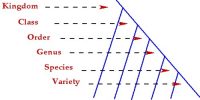The protochordata are considered as the fore runners of vertebrata The classification of the protochordata is based on the nature of the noto-chord.
Sub phylum : Hemichordata
These are exclusively marine organisms. They are solitary or colonial forms. They mostly remain as tubiculous forms. The body is soft, vermiform, unsegmented,bilaterally symmetrical and triploblastic. The body is divisible into three distinct regions namely proboscis, collar and trunk. The body wall is composed of single layer of epidermal cells. The dermis is absent. They have no endoskeleton. A projection from pharynx, projecting inside the proboscis may be considered as notochord. They have a spacious coelom lined by coelomic epithelium. The alimentary canal is a straight tube running between mouth and anus. They are ciliary feeders. Sexes are separate. Examples : Balanoglossus, Saccoglossus.

Fig: Balanoglossus
Sub phylum : Cephalochordata.
Cephalochordates are small fish like marine chordates. The persistent notochord extends forward beyond the brain. Hence these are called cephalochordates. The epidermis is single layered. Paired fins are absent. Muscles, nephridia and gonads are segmentally arranged. The pharynx is large with numerous gills. It is a filter feeder. Example : Amphioxus.

Fig: Amphioxus
Sub phylum : Urochordata
This taxon constitutes a unique group of animals exhibiting diversity in form and habit. In Urochordata the notochord is confined to the tail re-gion of the larva. The adults are mostly degenerate, sessile forms. The body is enveloped by a tunic or test. The free end of the body bears two openings, the mouth and the atriopore. The proximal part of the alimentary canal is greatly enlarged to form a spacious pharynx. They are hermaphroditic ani-mals. The development occurs through free swimming tadpole like larva. Example : Ascidia, Doliolum, Salpa.













